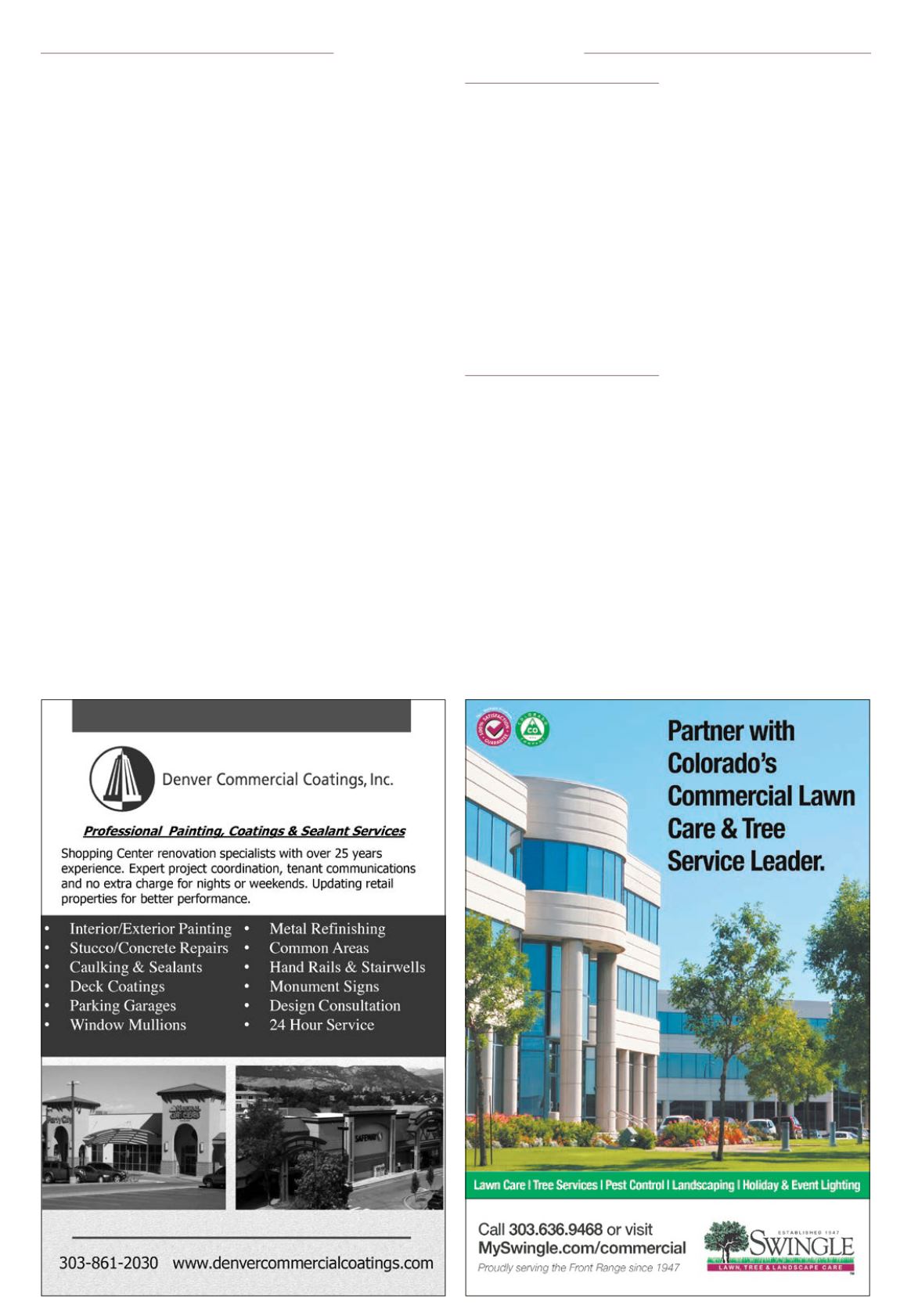

February 2015 — Retail Properties Quarterly —
Page 21
the road. This includes location, oper-
ability, potential for repurposing, level
of efficiency and spatial needs of the
infrastructure (i.e., electrical, heating,
cooling and make-up air units, grease
exhaust systems, distribution duct
work and grease trap disposal).
Exhaust systems.
Hood and grease
exhaust systems can be particularly
challenging due to their spatial and
infrastructural requirements. Thus,
they should be the primary consider-
ation when determining the viability
of transforming an existing space into
a restaurant.
In Fort Collins, for example, the
roof structure of the building had to
be updated to support the needed
rooftop ventilation equipment. This
necessitated a surgical intervention to
the existing structure, which involved
peeling away a portion of the exterior
walls and roofing.
Also, because grease exhaust must
exit through the roof via a chase, res-
taurants located in multistory build-
ings present more complex issues. If a
chase does not already exist, a vertical
path to the outside must be found or
created, which can be challenging in
historic buildings because structural
modifications are frequently required.
Lighting systems.
Because lighting
solutions are rapidly evolving, design-
ing energy-efficient systems that are
simple and cost-effective, yet allow
for easy upgrading is key. The ability
to take advantage of new technolo-
gies years before a space is ready for
a complete remodel eliminates com-
plex, costly retrofits and keeps opera-
tors happy.
Acoustics.
Restaurant design is often
about creating singular environments
where sound quality is a critical factor
in the success of the business, thus
acoustical strategies and treatments
must be carefully thought out early
in the design phase. If treated as an
afterthought, the addition of acousti-
cal panels or other solutions can not
only be unattractive, but financially
prohibitive.
Historical buildings.
Although reno-
vating neglected historical buildings
often can be a labor of love, preserving
the character of the built environment
within a city can be well worth the
time and money investment (and the
occasional headache!). Because the
city approval process requires approx-
imately four to six weeks, be sure to
involve historic authorities and plan-
ning departments as early as possible
to help align intentions and verify
limitations in a timely manner. Mak-
ing structural modifications to historic
buildings can be challenging because
they can severely alter the character
of the space. However, if handled
carefully, structural interventions can
be cost-effective as well as visually
compelling, even while retaining the
charm of the original. Comprehensive
evaluation of existing elements can
also streamline decisions regarding
what should be retained, modified or
replaced.
A Few Surprises
Substrates.
While assessing the
quality of existing floor substrates is
important, also be aware of unstable
structures and unleveled floors in his-
toric buildings. This will allow prepa-
ration for remediation strategies well
in advance of construction, and bud-
geting for the appropriate solutions. In
one of the locations, for example, the
crew had to implement a number of
structural upgrades to the substrate
of the historical building, ultimately
rebuilding the entire framing to level
the floor.
Long distance.
Opening restaurants
in other cities (both in- and out-of-
state) multiplies the complexities
as well as the challenges. To resolve
this, The Kitchen structured a flexible
design and construction process to fit
a variety of configurations and scales.
Developing efficiencies and finding a
balance between the priorities of bud-
get, brand and what your design can
accommodate is a natural next phase
as more locations are added and geo-
graphical scope expands.
Tips and Recommendations
Delegate to focus on what you love.
Because the operator of The Kitchen
restaurants is very hands-on when it
comes to design, finishes and materi-
als, the team reached a point where
a seasoned professional was needed
to manage projects moving forward.
While co-owner and chef Hugo
Matheson is exceptionally talented in
this area, it became obvious to him
that opening four new restaurants in
less than year, while fun and exciting,
is also extremely time-consuming and
takes him away from what he loves –
being a chef!
Look for efficiencies.
As growth accel-
erated and locations expanded, dis-
covering how to streamline operations
and seek out efficiencies in design
and budgeting became increasingly
critical. Lessons learned about how
to implement these ideas at future
locations helped to accomplish this,
and allowed the development process
and timelines to speed up enabling a
quicker move in. An example of this
involved the back-of-house spaces.
While always striving to create unique
dining experiences for customers
and one-of-a-kind public spaces,
streamlining kitchen operations is
critical. Continually soliciting feedback
regarding materials, adjacencies and
systems from patrons and service
staff helps designers create a better
and more consistent template for the
future.
Plan but be flexible.
It is important
to have a strong design in place prior
to commencing construction, but
be open to changing or evolving the
design as unforeseen elements of
the building are revealed or discov-
ered during demolition. 3-D models
allow for streamlining communica-
tions among teammembers before
construction, therefore minimizing
changes in the field. This was espe-
cially true for the first out-of-state
project in Chicago. Once a high level
of quality control was established, the
design could evolve from one restau-
rant to the next while remaining true
to its meaningful origins.
s
Restaurant UpdateMaking structural
modifications to
historic buildings
can be challenging
because they can
severely alter the
character of
the space.
















